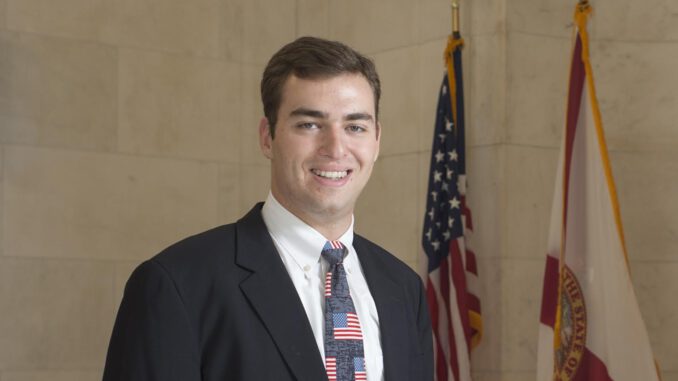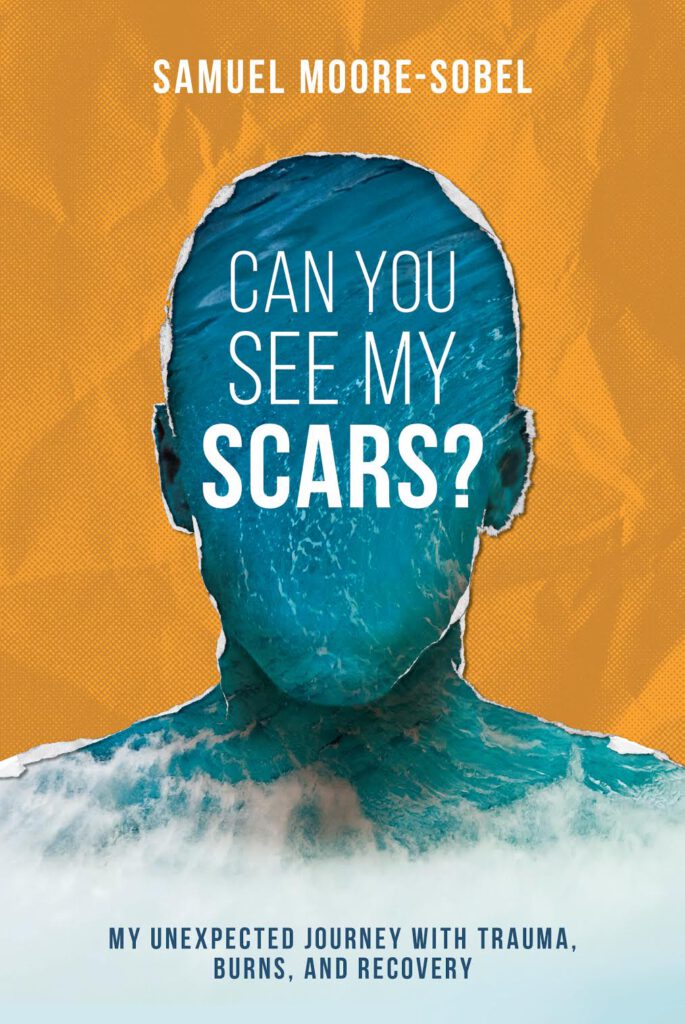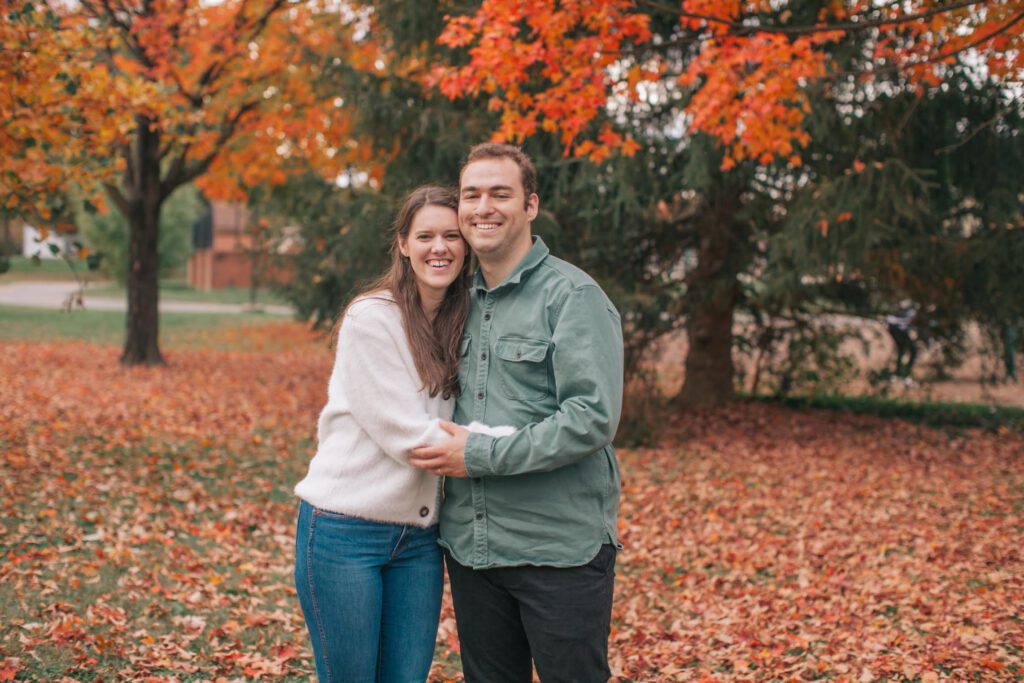
A PAINFUL PAST
By Chris Wadsworth
Scars are a difficult thing. Some of us carry scars on the outside. Others carry scars on the inside. It’s the unfortunate soul who carries both. Samuel Moore-Sobel grew up in Ashburn Farm and attended Stone Bridge High School. In the summer between his freshman and sophomore years, Moore-Sobel was involved in a sudden and shocking accident that has affected his life ever since.
Moore-Sobel — who now works in global cloud security for Amazon — has written a book about his life, the accident and his recovery called “Can You See My Scars.” It was released last year by publisher Mascot Books. Ashburn Magazine talked with Moore-Sobel, 27, who lives with his wife, Megan, in Leesburg.
Ashburn Magazine: Take us back to that day — the day of the accident. What happened? Samuel Moore-Sobel: I was hired by a man in my community to move boxes out of his garage and into a nearby storage unit. Nothing went as planned. Long story short, we ended up filling a U-Haul truck with the man’s belongings and taking them to his friend’s house for storage in her shed. The man told me that his friend’s house was “just down the road.” Turns out, his friend lived 45 minutes away. When we arrived, the friend’s shed was filled with items. We had to empty the shed so that we could fit the man’s belongings inside.
Q: How did the actual accident unfold?
A: A box made its way into my hands. I looked down at the opened box and saw books and hay. “Toss it,” the woman said. So I did. The minute it hit the ground I heard an explosion. I could see a liquid substance flying toward me. Within seconds, I felt like I was on fire.
Q: What was it? What was in the box?
A: Sulfuric acid. It was in a glass jar at the bottom of the box.
Q: What were your injuries?
A: I suffered second- and third-degree burns to my face and arms. I was rushed to Winchester Medical Center and placed into the chemical shower. Then I was flown to Children’s Hospital in Washington. I underwent a debridement surgery to clean the affected areas, remove dead skin and prevent infection. After that surgery, I was released from the hospital. And just like that, my life had changed forever.
Q: Your injuries left scars — the title of your book. What were the visible scars?
A: At that point, my face looked like it was covered with dark black, brown and green stains. Over time, bright red scars formed on my face and arms. I have scars across my neck, cheeks and forehead and a few scattered across my right arm.
Q: What happened to the man? Were there any criminal charges or were you able to be financially compensated?
A: I don’t know what happened to the man — I haven’t spoken to him since the day of the accident. I do know that no criminal charges were brought against him. There was a civil suit, but I’m not able to discuss the details.
Q: You had to miss a lot of school. How did that impact you?
A: I missed the first two months of school. During that time, teachers would come to my house in the afternoon to teach me at my dining room table. When I returned to school later that fall, it was jarring. I felt overwhelmed by the experience of walking through a crowded hallway. I was worried a backpack might accidentally hit my face and subsequently reverse the healing process. I was really worried about how I would be received by my classmates, whether I would be a target for bullying
Q: High school is such a critical formative time. How did your scars impact that experience?
A: I really struggled to connect with my peers. I felt like an outcast. My friends from freshman year mostly drifted away. I felt like they just didn’t know how to interact with me after the accident. Academically, I still managed to get decent grades, although it was hard to keep up. Socially, I definitely didn’t fit in. I was involved in a lot of extracurricular activities, but I was struggling to stay afloat, and the frequent surgeries, followed by lengthy recovery periods, didn’t leave much time for a social life.
Q: In the years since — college, career, marriage — how did you recover from your experience and what parts have stayed with you?
A: Physically, I’ve recovered well. Most people say they can no longer see my scars. It took me much longer to reach emotional healing. I carried this experience with me into adulthood, especially in romantic relationships. I had convinced myself that my scars (both inside and out) made me unlovable.
Q: But you’re happily married now.
A: Yes. I came to a place where I decided that despite my scars (and perhaps even because of my scars), I was worth loving. Soon after, I met my wife. She helped me overcome any remaining feelings of inadequacy and insecurity I felt over my scars. To say I am grateful to her doesn’t do it justice. Our relationship has been a healing and beautiful chapter in what had been a long and painful journey up to that point.
Q: You chose to write a book. What was that experience like?
A: It took several years to write “Can You See My Scars?” I wanted to find the right words to describe what I had experienced. So much of what had happened felt indescribable. It was painful reliving the experience. But now that it’s out, I feel at peace. Publishing this book was the final step in a process to move on from the past and into the present.
For more about Samuel Moore-Sobel and his story, as well as upcoming events and speaking engagements, visit www.samuelmoore-sobel.com.



